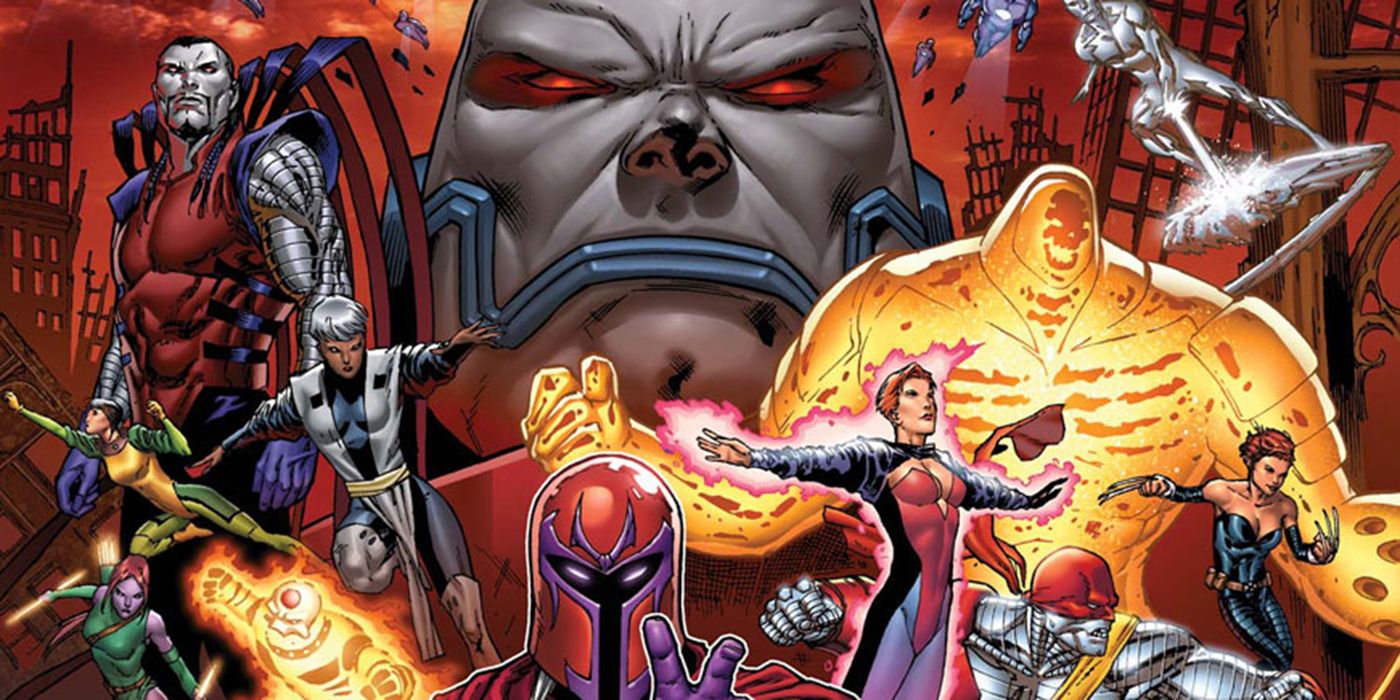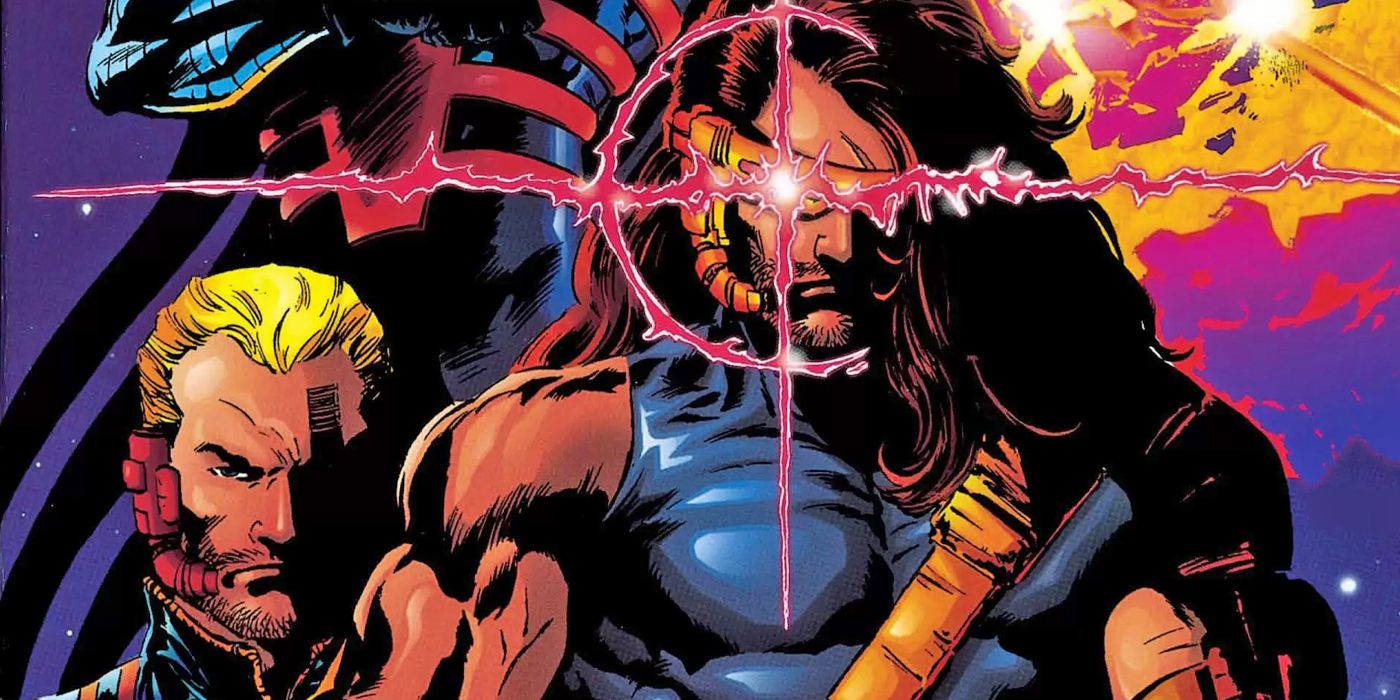The love affair between comic books and alternate realities is as as old as the medium itself. For decades, we've seen countless stories centered around well-established heroes being dropped into far-flung futures or adjacent universes, most of which are often less than perfect. While it's easy to write off a lot of these "what if" scenarios as lazy storytelling or the result of a writer running out of ideas, many of these possible past, present and future tales have permeated the collective consciousness of comics fans.
Creators still look to the dark version of Batman in the pages of Frank Miller's The Dark Knight Returns for inspiration (for better or worse). Characters featured in alternate future timelines, like Old Man Logan and Rachel Summers, have become part of larger Marvel canon. Several Crisis events have bridged the fractured multiverses of DC Comics. But the dark horse, in terms of staying power, of the many possible worlds we've seen in comics is the 1995 crossover event Age of Apocalypse, which takes place in a reality where Professor Charles Xavier is killed and Magneto is left to lead the X-Men. And, yes, that goes about as well as you'd think.
Days of Past Future
During the storyline "Legion's Quest," David Haller traveled back in time intending to assassinate Magneto, but wound up killing his own father in the process, thus creating a time paradox that caused Legion to vanish and a new timeline to blossom. The fallout of Xavier's death would be explored in X-Men: Alpha #1, which was released in January of 1995. This one-shot introduced readers to alternate versions of their favorite mutants and the bold new world they inhabited. In this new timeline, Apocalypse conquered North America, mutants became the dominant species and countless humans were systematically eradicated. Think of "Age of Apocalypse" as being akin to the world seen in "Days of Future Past," but with the pendulum swung way off in the other direction.
After the release of X-Men: Alpha #1, all the X-titles changed their names and took place in this newly established timeline. Wolverine was retitled Weapon X. Uncanny X-Men and X-Men became Astonishing X-Men and Amazing X-Men, respectively, and so on. For four issues each, every book in the X-Men repertoire was focused on this dystopia, and fans seemed to love it for the most part.
RELATED: Marvel Just Powered Up a Classic X-Man to Omega Level
The world reader's were shown was dark, dire and felt completely fresh, despite all the familiar faces. There was a feeling of morbid curiosity in seeing a version of the X-Men who had been shaped by the tragedy of losing their beacon of hope, then being besieged by a tyrant. Fans knew this was not going to be a permanent change, so despite how horrible things were for our heroes, there was always a sense of safety.
That kind of mental separation helped make Age of Apocalypse compelling, but no one could have predicted the lasting power it would have. With so many moving parts, a rewritten history, a whole new world to populate and characters to explore, the crossover was a bit of a gamble for Marvel. If Age of Apocalypse hadn't resonated with fans, it could have been a footnote in the annals of comics history. So, why did this experiment work so well?
NEXT PAGE: Why the Age of Apocalypse Endures to This Day
Timing is everything
In 1995, the X-Men were still riding a huge wave of popularity despite some diminished enthusiasm after some of the creators who made the characters so popular in the late '80s and early '90s had left Marvel and established Image Comics. Fortunately, writers and artists like Warren Ellis, Andy and Adam Kubert, Mark Waid, Joe Madureira and Chris Bachalo (and many more recognizable names) took up the X-reins and maintained the quality of the books (for the most part).
RELATED: X-Men: Marvel Reveals the Secret Behind Cyclops' Resurrection
But the reason Age of Apocalypse has become a comic book a lot of current day writers and artists keep dunking their buckets into may have something to do with the age of those creators at the time of the event's release.
Several writers who have utilized elements of the crossover in recent years would have been in their late teens or early 20s at the time of Age of Apocalypse's initial release. For many comics fans, this period of time usually cements their ideas about how comic books should operate to a certain degree. And, of course, with the series being nearly 25 years behind us, nostalgia is bound to rear its head.
Comics fans tend to recall the books of their youth being the best they had ever read. Now, in some cases this is true, but there is an intrinsic fallacy to first impressions with regards to glomming onto pop culture. Nostalgia sometimes puts horse blinders on fans, which can make them defend the things they grew up loving, no matter its quality. Thankfully, Age of Apocalypse has aged surprisingly well. Even all of the ridiculous '90s character designs (no sleeves, headgear, sashes and angles) can't deny the crossover's fascinating character work and solid stories. The years to come would prove as much.
Revisit the end of the world
The first revisit to what is now known as Earth-295 came a decade later. Marvel Comics celebrated the crossover's 10-year anniversary with X-Men: Age of Apocalypse, a six-issue miniseries from writer C. B. Cebulski (under the controversial pseudonym Akira Yoshida) and artist Chris Bachalo, who previously worked on the Age of Apocalypse title Generation Next.
The series focused on Logan a year after the events of the final crossover story. It wasn't exactly met with the warmest of receptions, but it did open up the floodgates. A few years later the world of Age of Apocalypse would give birth to some major plot points in Uncanny X-Force by Rick Remender, Jerome Opeña, Greg Tocchini and Phil Noto. Age of Apocalypse Nightcrawler would join the titular team and fight against the evil mutants who were still left alive after the events of the initial crossover... and it was awesome.
RELATED: Age of X-Man Is Not a Sequel to Age of Apocalypse
Around the same time period, Brian Michael Bendis and Chris Bachalo (who can't seem to escape Age of Apocalypse) used the dark version of Hank McCoy from Earth-295 as one of the villains in their run on Uncanny X-Men. This period (which was from 2011 to about 2015) was somewhat of a high point for the crossover world to become relevant again. It coincided with the publication of the X-Men: Age of Apocalypse Omnibus (which is a must-own, by the way), so readers who never got the chance to experience it could understand all the insane references being made in the monthly X-Men titles at the time. The renewed interest in Earth-295 also spawned an ongoing series simply titled Age of Apocalypse, and in 2015 the world would again be incorporated during Secret Wars in 2015.
You can't escape it
... And it's still happening.
During the 10-issue story arc "X-Men: Disassembled," from the pages of the Marvel flagship title Uncanny X-Men, characters from Age of Apocalypse are being brought to the forefront, specifically X-Man, who is getting his own "Age" now. This just goes to show the legacy of the crossover isn't going anywhere anytime soon.
Sure, it might hang back for a year or two before someone decides to change that. Not every revisit of Age of Apocalypse has been stellar, but neither will the revisits moving forward. But the one guarantee is that the dire world of Earth-295 will be mined until it is completely hollow, and there is a 90 percent chance Chris Bachalo will be involved in some capacity.


